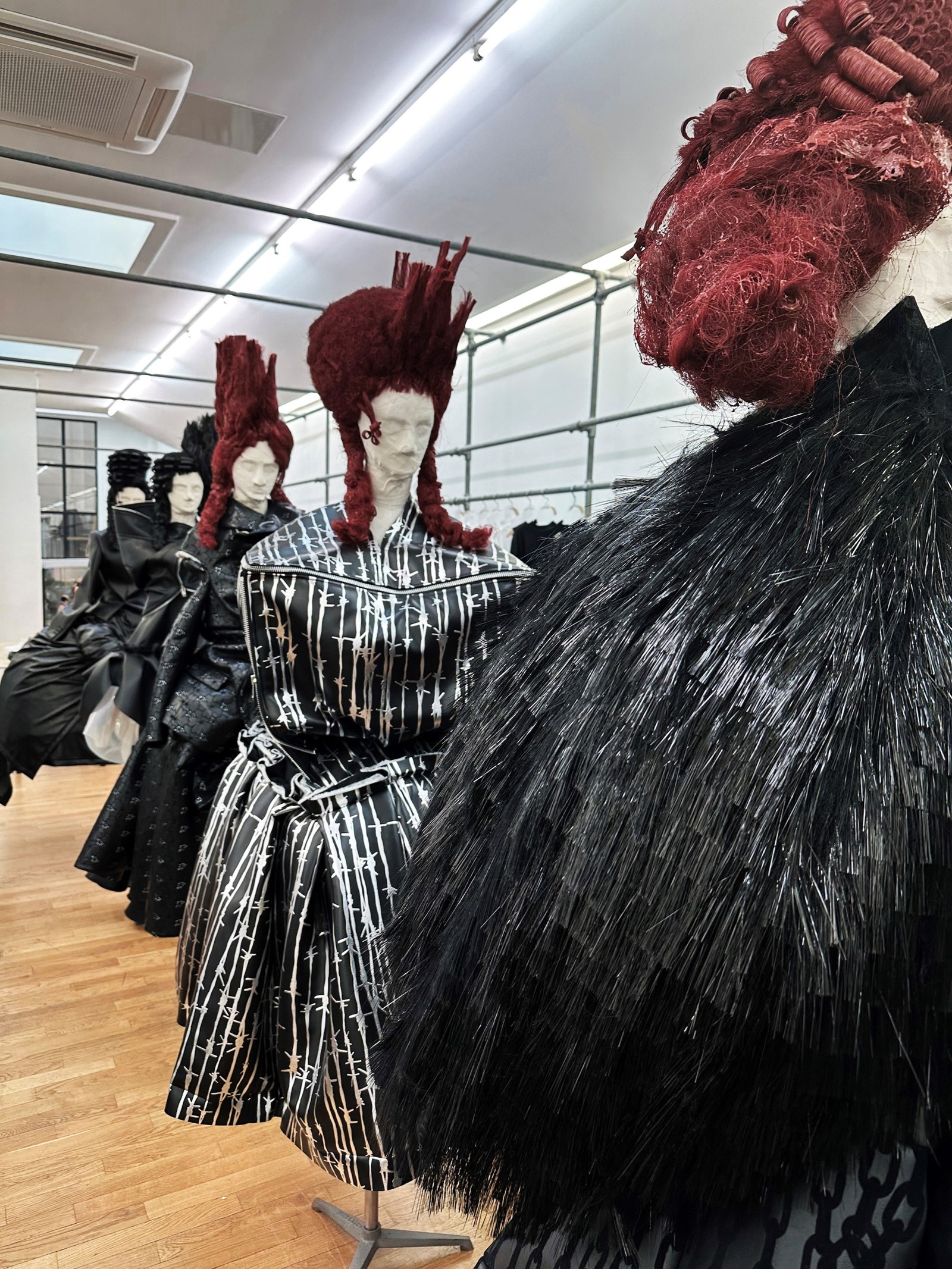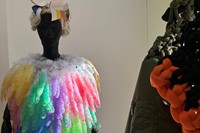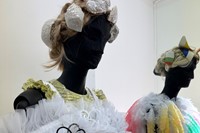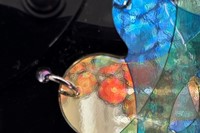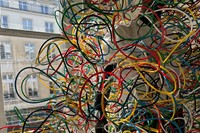Saturday in Paris is ‘Comme day’. It opens (early) with Comme des Garçons acolytes Junya Watanabe and Noir Kei Ninomiya and crescendos to Comme des Garçons itself: this season quite literally, Rei Kawakubo’s powerfully moving collection was accompanied by Ludwig van Beethoven’s Sonata No 14 in C sharp minor (Moonlight) and Sonata No 32 in C minor. All three presentations were remarkable. Junya’s explanation (in recent years with the explosion of social media, each issues a brief one) was: “I want to express the beauty of the contrast between clothes and sculptures.” He did just that, in black and dusty florals (both signatures), wrapping the body in trapezoid shapes and all-enveloping puffas all while demonstrating his pattern-cutting expertise which is second to none.
Noir wasn’t Noir. “For this season, I chose to focus on creating something new using different colours and textures and play with the reflection of light,” the youngest designer stated. The soundtrack was as glittering and full of joy as the clothes. The Clangers (a stroke of genius) whooped as what looked like Mr Messy came down the runway in a tangle of primary colours or wrapped in candy-coloured latex feathers and shimmering sequinned flowers. For her part, Kawakubo is angry. “This collection is about my present state of mind. I have anger against everything in the world, especially against myself.” Increasingly this shy woman, who has always insisted her work speak for itself, is political and so clever: in just two sentences she expresses the anxiety of our times and her frustration with her inability to change that.
The deceptively quiet Comme des Garçons showroom opens two days later and to be invited there is a privilege. Its location is no accident. This totem to radical design is based in the conversely most conservative of locations, home to any number of fine jewellers and, of course, the Ritz Paris: Place Vendome. The Comme showroom has none of the bombast of its neighbours: blink and you might miss it. Its typically grand 18th-century facade belies the brightly lit, brightly white interior where Kawakubo’s monumental designs form a line down the centre on mannequins and clothes hang on simple black metal rails on either side. Accessories are placed on equally minimal tables. At the back of that same long, narrow room is her own glass-walled office where she sits, stepping out from time to time, to survey the scene quietly, before returning to her Tokyo home and company base. This room is where it started but as the business has grown it has taken on more spaces on different floors: Junya is upstairs, Noir, the newest addition to the fold, overlooks the rooftops of the French capital.
In these rooms press and, more often, buyers see not only the runway collections, from all sides and up close, but the many intelligent collaborations all three names have built on over the years. Rarely are they one season wonders. Instead, they too are allowed to grow. Comme des Garçons and Nike and, this time, PHILEO. Junya with Levi’s, Hoka and more and Noir with Reebok: Instapump designs inflate on the feet and are as cute as the clothes they are designed to be worn with.

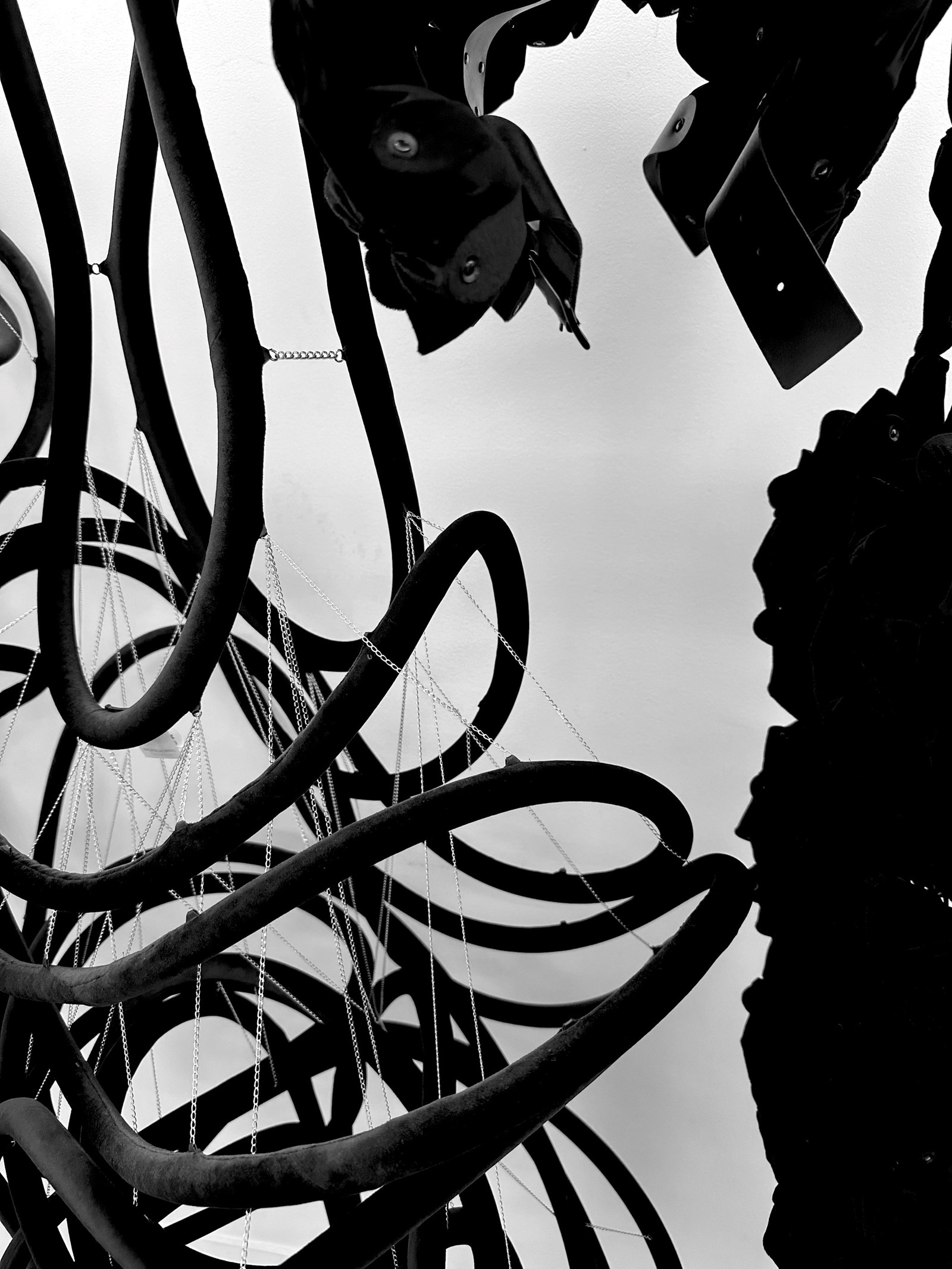
There is no chatter around the Comme des Garçons name. Only reverence, and admiration, even adulation, for the clothes. There is no endless talk of succession either, no media questioning of business strategy, no designer musical chairs. And it works. Rei Kawakubo may be modest but she is strong: a woman working in a famously chauvinistic society who has created an empire with her own label and those she continues to support.
And despite her anger, Rei Kawakubo has, in fact, changed things. Her aesthetic remains the most influential of the late 20th-century and continues to resonate today. More than that, though, what she and her business represent is the triumph of creativity over the corporate and the banal. These three shows are a pure expression of what their designers want to say at any given time, unburdened by the elsewhere requisite product placement and marketing strategy or by also banal constructs: wearability, commerciality. In any case, all that is in place. Where the rest of the fashion industry seems barely to breathe, this extraordinary woman has allowed herself and those she works with the time and space to hone their skills, to think, to move forwards – and, time after beautiful time, it shows.
